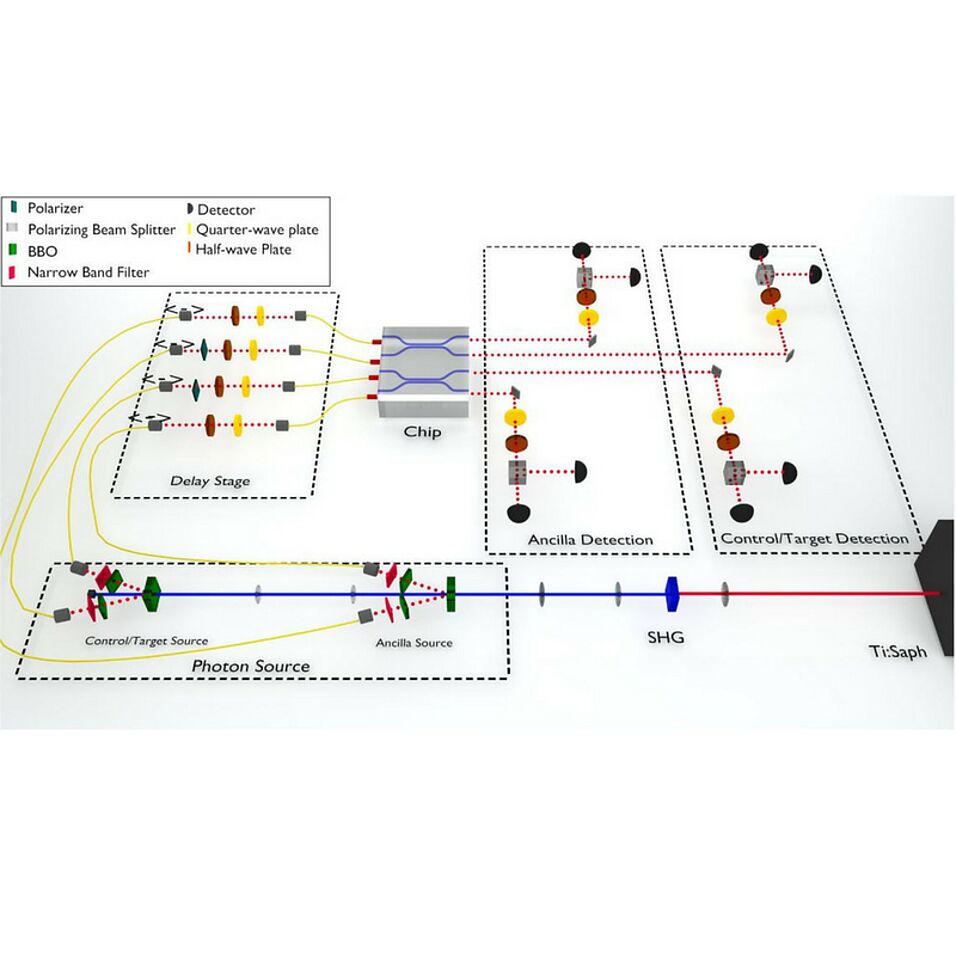Recent progress in integrated-optics technology has made photonics a promising platform for quantum networks and quantum computation protocols. Integrated optical circuits are characterized by small device footprints and unrivalled intrinsic interferometric stability. Here, we take advantage of femtosecond-laser-written waveguides’ ability to process polarization-encoded qubits and present an implementation of a heralded controlled-NOT gate on chip. We evaluate the gate performance in the computational basis and a superposition basis, showing that the gate can create polarization entanglement between two photons. Transmission through the integrated device is optimized using thermally expanded core fibers and adiabatically reduced modefield diameters at the waveguide facets. This demonstration underlines the feasibility of integrated quantum gates for all-optical quantum networks and quantum repeaters.
view full text here.
npj Quantum Information 4, 13 (2018).

